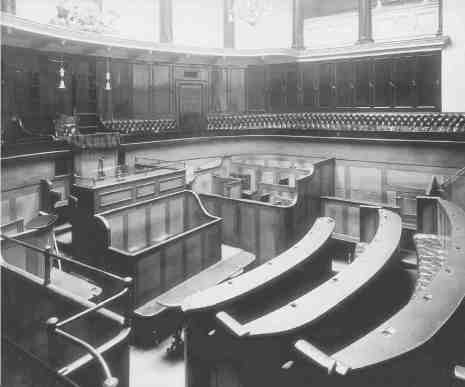
A Southwark street in the 1890s
Serious violence such as attempted and actual murder was rarer in the nineteenth century than we might think from all the concentration of sensation literature and ‘murder news’ that has survived. Excellent work by Judith Flanders and Rosalind Crone has illuminated our understanding of the Victorians’ fascination with murder and gore but we shouldn’t conclude from this that homicides were an everyday occurrence.
Sadly, domestic and spousal violence was commonplace and the Police Courts were regularly witness to tales of wife beating as tensions in the home were brought into the public sphere. Magistrates tried to take a firm line with abusers but were often frustrated by the fact that survivors frequently refused to condemn their abusers in court; they were prepared to take them to law but not prosecute them fully, for fear of future retribution or losing the main breadwinner.
Nearly all of these victims were women but women did initiate violence sometimes and fight back when attacked. Men rarely prosecuted their wives however, because this would have suggested they had lost control of the household and that would have been a social catastrophe for their reputation.
So it is rare to see a woman in front of the courts for assaulting her husband or partner, unless there is a very clear and obvious reason, as there is with the case of Elizabeth Penning.
Elizabeth Penning had been living with John Walthe for several years. The couple weren’t married but lived as if they were. This sort of arrangement – normal today – was much more common than me might expect in the nineteenth century. Marriage was expensive and working class society did not demand that couples tied the knot officially, especially in large urban centres such as London.
It wasn’t a happy marriage however. John was having an affair and abused his wife. By his own admission he had ‘ill-treated [her] while he lived with her. He had broken three of her ribs, [and] struck her with a chopper, for which he had been punished’.
In late January 1860 he had been out drinking late and was on his way home. As he approached the Sir John Falstaff pub on Kent Street he noticed Elizabeth sitting on the step outside.
She challenged him, calling out: ‘What have you done with your woman?’
The pair rowed and John walked on. He hadn’t gone far when he heard female screams and rushed back and down Falstaff Yard, near the pub. There he found Elizabeth armed with a knife. She rushed at him and aimed stab at his neck. The kitchen knife went in deep and blood flowed. John was taken to St Thomas’ Hospital and his life was in danger. He didn’t recover form his wounds for a month. Meanwhile Elizabeth was arrested while the courts waited to find out whether she would be charged with attempted or actual murder.
Fortunately for all concerned John survived and the case came initially before the Southwark Police Court magistrate, Mr Burcham in February.
Now that Waltin could give evidence more detail of what happened that night emerged. He’d not been alone when he passed Elizabeth at the pub. He’d had a woman on his arm and that was how the row had started. Elizabeth had threatened him and he’d dismissed this, telling her she ‘had not pluck to do it’.
PC 171M had been first on the scene, responding to the shouts from Falstaff Yard. He saw Elizabeth brandishing a bloodied kitchen knife and arrested her. She admitted stabbing her husband and said ‘she intended to do for him, for his brutality and for leaving her’. John was reluctant to testify against his wife, and admitted his own fault in the matter. Elizabeth said nothing before the justice, preferring to keep her defence for the jury trial that would inevitably follow.
The case did come before the Old Bailey and Elizabeth was convicted of wounding her partner. The trial unfolded with little more detail than we have from the pre-trial hearing. We do get to hear from Elizabeth however, who issued a written statement at the end of the case. This repeats some of the facts John admitted to at Southwark but adds considerably to a picture of his brutality and callous disregard for her. I’m not for a moment suggesting she was justified in stabbing him but it helps explain why she did so:
The prisoner put in a written defence, stating that she had lived with the prosecutor for seven years and suffered much ill treatment; that she had charged him at Southwark Police-court with cutting her head open with a chopper, for which he was imprisoned for three months; since when he has fractured three of her ribs, cut her eye open, and given her two severe wounds on the head with a pickaxe, which caused her at times not to know what the did or said; that he had kept her for three months without boots or shawl, so that she could not seek work, and got involved in debt, and that when she spoke to him about it he struck her; that she saw him on Saturday night with the woman in question, whom he told to give her a good hiding.
Having been found guilty Elizabeth was sentenced to six months imprisonment by the Common Sergeant.
[from The Standard, Monday, February 27, 1860]








